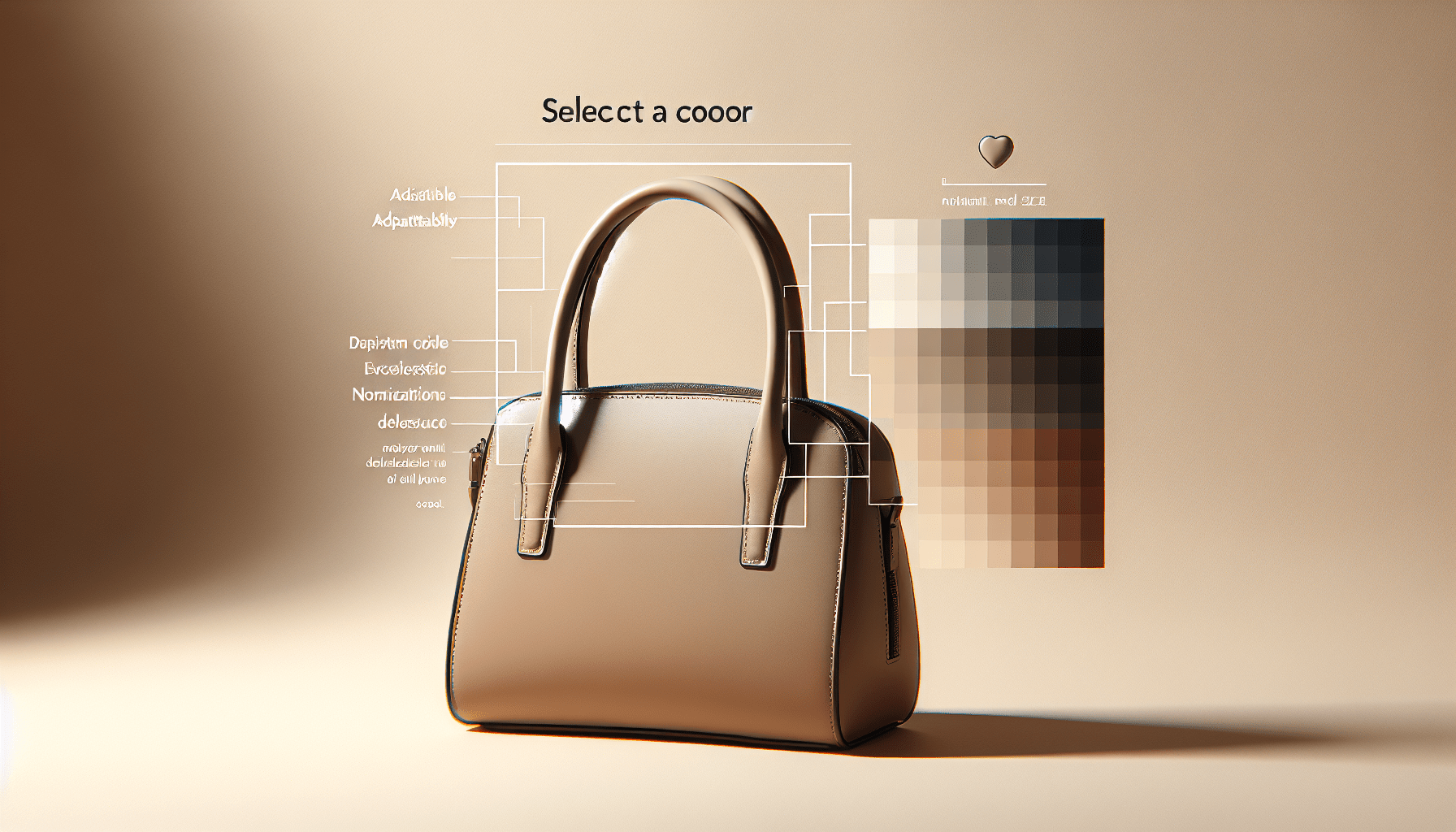Can You Have A Carry On And A Purse
Are you an avid traveler who constantly struggles with the dilemma of balancing convenience and style? If so, you’ve probably wondered, “Can you have a carry-on and a purse?” Well, the answer is a resounding yes! Gone are the days of sacrificing fashion for practicality. In this article, we will explore how you can effortlessly navigate airport terminals with both your trusty carry-on and a fashionable purse in hand. Say goodbye to bulky backpacks and hello to traveling in style!
Understanding Airline Carry-On Policies
Traveling by air often requires careful planning, especially when it comes to packing. Understanding airline carry-on policies is essential in order to avoid any unexpected surprises during your journey. These policies typically cover carry-on size limits, weight restrictions, and the number of allowed bags. By familiarizing yourself with these guidelines, you can pack efficiently and ensure a smooth travel experience.
Carry-On Size Limits
Each airline has specific regulations regarding the size of carry-on bags. Generally, the dimensions allowed for carry-on luggage range from 22 to 24 inches in height, 14 to 18 inches in width, and 9 to 10 inches in depth. It is crucial to measure your bag before heading to the airport to ensure it meets the requirements set by your chosen airline. By adhering to these size limitations, you can avoid any potential fees or the hassle of having to check your bag.
Weight Restrictions
In addition to size limits, airlines typically enforce weight restrictions for carry-on bags. The weight allowance varies depending on the airline, with most carriers setting a limit of around 15 to 22 pounds. It is important to weigh your bag before leaving for the airport to ensure it falls within the permitted range. If your bag exceeds the weight limit, you may be required to check it, which can incur additional fees and potentially cause delays.
Number of Allowed Bags
Airlines also specify the number of carry-on bags allowed per passenger. Most airlines allow one carry-on bag and one personal item, such as a purse or laptop bag. However, it is essential to check the specific policy of your chosen airline, as some may have different allowances or additional fees for multiple bags. By understanding the number of allowed bags, you can plan your packing accordingly and avoid any last-minute surprises.
Differentiating Between a Carry-On and a Purse
When preparing for your trip, it is crucial to understand the difference between a carry-on bag and a purse. This distinction is important when it comes to complying with airline regulations and ensuring that you have all your essentials within reach during your journey.
Defining a Carry-On
A carry-on bag is a larger piece of luggage that passengers are allowed to bring into the cabin of the aircraft. Its purpose is to store clothing, toiletries, and other necessary items for the duration of the flight. Carry-on bags are typically stowed in the overhead compartments or under the seat in front of you. They vary in size, shape, and design but must adhere to the airline’s specified dimensions and weight restrictions.
Identifying a Purse
A purse, on the other hand, is a smaller bag carried by passengers to hold personal items such as wallets, travel documents, electronic devices, and other essentials. Purses are generally smaller in size and are designed to be portable and easily accessible during the flight. This allows passengers to keep their personal items close at hand without the need to access the overhead compartments or constantly open their larger carry-on bags.
Distinguishing Between the Two
Distinguishing between a carry-on bag and a purse may seem straightforward, but it is crucial to ensure that your belongings are properly divided between the two. While a carry-on bag mainly holds your clothing and travel necessities, a purse is reserved for essential items that you may need during the flight, such as your passport, phone, and wallet. By understanding the distinction between the two, you can pack and organize your belongings in a way that is both practical and compliant with airline regulations.
Airline Regulations on Carry-Ons and Purses
To ensure a smooth travel experience and avoid any non-compliance issues, it is important to familiarize yourself with the specific carry-on and purse policies enforced by your chosen airline. These policies may vary, so it is essential to check the guidelines provided by the airline before you pack your bags.
Carry-On Policies
Carry-on policies typically cover the size and weight restrictions, as well as the number of allowed bags. Most airlines have detailed information on their websites regarding the maximum dimensions and weight limits for carry-on bags. Additionally, some airlines may have restrictions on certain items, such as liquids or sharp objects. By thoroughly reviewing the carry-on policies of your chosen airline, you can pack accordingly and avoid any potential issues during the boarding process.
Purse Policies
While carry-on bags receive more attention and regulation, airlines also have policies in place for personal items such as purses. These policies generally specify the size and weight limits for personal items and may vary from one airline to another. Some airlines may restrict the dimensions of purses to ensure they fit under the seat in front of you, while others may be more lenient. By familiarizing yourself with these policies, you can choose an appropriate purse size and pack your essentials accordingly.
Combined Policies
In some cases, airlines may have combined policies that cover both carry-on bags and personal items. These policies often outline the maximum dimensions and weight allowances for both types of luggage. By understanding the combined policies, you can ensure that your carry-on bag and purse meet the requirements set by the airline, avoiding any potential issues during check-in and boarding.
Strategies to Carry a Carry-On and a Purse
Once you have a clear understanding of the carry-on and purse policies, you can employ various strategies to effectively carry both without compromising on your travel essentials or the convenience of having your personal items easily accessible.
Utilizing Personal Item Allowance
Most airlines allow passengers to bring one carry-on bag and one personal item. To make the most of this allowance, consider using a larger purse or tote as your personal item. Opt for a bag that can accommodate your essential items, such as a laptop, wallet, phone, and travel documents. By maximizing the capacity of your personal item, you can ensure that you have everything you need within easy reach while staying within the airline’s regulations.
Investing in a Convertible Bag
Another strategy is to invest in a convertible bag that can serve both as a carry-on and a purse. These versatile bags often have multiple compartments and detachable straps, allowing you to customize their use according to your needs. When boarding the aircraft, you can use the bag as a carry-on, utilizing its larger capacity and utilizing the overhead compartments. Once on board, you can detach the straps and convert it into a smaller purse for easy access to your personal items during the flight.
Maximizing Carry-On Space
To effectively carry a carry-on bag and a purse, it is important to make the most of the available space in your carry-on. Utilize packing cubes, compression bags, or other organizational tools to maximize the space within your carry-on. By keeping your belongings neatly packed and organized, you can create more room for both your clothing and your personal items. This will ensure that you can comfortably fit all your essentials while adhering to the airline’s size and weight restrictions.
Tips for Traveling with a Carry-On and a Purse
traveling with a carry-on bag and a purse can be incredibly convenient and efficient, allowing you to bypass the wait at baggage claim and ensuring that your essentials are always within reach. To make the most of this travel strategy, consider the following tips:
Pack Smartly and Efficiently
When traveling with a limited amount of space, it is important to pack smartly and efficiently. Make a list of essential items and prioritize their inclusion in your carry-on. Pack versatile clothing that can be mixed and matched, and consider using travel-sized toiletries to save space. By packing strategically, you can maximize the usefulness of your carry-on while still having room for your purse and personal items.
Organize Your Personal Items
To make accessing your personal items during the flight more convenient, organize them within your purse. Use smaller pouches or zippered compartments to separate your passport, wallet, phone, and other essentials. This will not only make it easier to find what you need but also prevent your purse from becoming cluttered and disorganized. By keeping your personal items neatly arranged, you can easily access them without the need to search through a jumble of belongings.
Essential Items to Include
When traveling with a carry-on and a purse, it is important to include essential items that will ensure your comfort and well-being throughout the journey. These items may include:
- Travel documents: Carry your passport, boarding passes, and any necessary visas or identification.
- Wallet: Bring your identification, credit cards, and cash.
- Phone and charger: Keep your phone and charger easily accessible for communication and entertainment during the flight.
- Medications: If you require any prescription medications, bring them in your purse for easy access.
- Snacks and water bottle: Pack some non-perishable snacks and a refillable water bottle to stay refreshed during the flight.
Benefits of Traveling with a Carry-On and a Purse
Opting to travel with a carry-on bag and a purse instead of checking in larger luggage can offer numerous benefits.
Convenience and Accessibility
The primary advantage of traveling with a carry-on and a purse is the convenience and accessibility it provides. With your essential items within arm’s reach, you can easily access your personal belongings during the flight without the need to access the overhead compartments. This can be particularly helpful during long flights when you may want to charge your phone, use your wallet, or check your travel documents.
Avoiding Checked Baggage Fees
By exclusively traveling with a carry-on and a purse, you can avoid the additional fees associated with checking in larger bags. Many airlines charge substantial fees for checked baggage, and these costs can quickly add up, especially if you are a frequent traveler. By adhering to the airline’s carry-on policies, you can save money and allocate your travel budget to other aspects of your trip.
Reducing the Risk of Lost Luggage
Checking in larger bags increases the risk of your luggage being lost or delayed during transit. This can be a stressful experience, especially if you rely on specific items or clothing for your trip. By choosing to travel with a carry-on and a purse, you eliminate the possibility of lost luggage altogether. With your bags within your control throughout the journey, you can have peace of mind knowing that your belongings are always with you.
Potential Challenges and Solutions
While traveling with a carry-on and a purse offers numerous advantages, there may be potential challenges to consider. However, with some strategic planning, these challenges can be easily overcome.
Complying with Size Restrictions
One of the primary challenges when traveling with a carry-on and a purse is ensuring that both items comply with the airline’s size restrictions. To overcome this challenge, carefully measure your bags before your trip and choose ones that meet the requirements. Additionally, consider investing in lightweight and flexible carry-on bags and purses that can be easily adjusted to fit within the size limitations.
Managing Weight Limitations
Weight restrictions can also pose a challenge when traveling with a carry-on and a purse, especially if you tend to pack heavy items. To manage weight limitations, pack only the essentials and opt for lightweight clothing and toiletries. If necessary, wear your heaviest clothing items and shoes during travel to reduce the weight in your bags. By being mindful of the weight of your belongings, you can ensure that you stay within the airline’s limits.
Keeping Valuables Safe
Traveling with valuable items in your purse can be a cause for concern. To address this challenge, consider investing in a purse with built-in security features, such as RFID-blocking pockets or hidden compartments. Additionally, keep your purse close to you at all times, especially in crowded areas or during transport. By taking precautions and remaining vigilant, you can mitigate the risk of theft or loss.
Airline-Specific Carry-On and Purse Policies
While many airlines have similar carry-on and purse policies, it is important to note that there can be variations in rules and regulations. To provide a comprehensive overview, here are examples of carry-on and purse policies from major airlines:
Examples of Major Airlines’ Policies
- Delta Airlines: Allows one carry-on bag and one personal item, with the maximum dimensions for the carry-on being 22 inches x 14 inches x 9 inches, and for the personal item being 17 inches x 13 inches x 10 inches.
- United Airlines: Permits one carry-on bag and one personal item, with the maximum dimensions for the carry-on being 22 inches x 14 inches x 9 inches, and for the personal item being 17 inches x 10 inches x 9 inches.
- American Airlines: Allows one carry-on bag and one personal item, with the maximum dimensions for the carry-on being 22 inches x 14 inches x 9 inches, and for the personal item being 18 inches x 14 inches x 8 inches.
- Southwest Airlines: Permits one carry-on bag and one personal item, with the maximum dimensions for the carry-on and the personal item both being 10 inches x 16 inches x 24 inches.
Variations in Rules and Regulations
It is important to note that these examples are subject to change, and each airline may have specific variations in their carry-on and purse policies. To ensure compliance, it is recommended to check the official website of the airline you are flying with for the most up-to-date information. By understanding and adhering to the specific policies of your chosen airline, you can avoid any potential issues during check-in and boarding.
Navigating Airport Security with a Carry-On and a Purse
When passing through airport security, it is important to be aware of the guidelines set by the Transportation Security Administration (TSA) to ensure a smooth screening process.
TSA Guidelines for Carry-Ons and Purses
In accordance with TSA guidelines, passengers are required to place their carry-on bags and personal items on the X-ray screening belt for inspection. This includes any items in your purse, such as electronics, liquids, or metallic objects. To expedite the screening process, it is recommended to pack your personal items in an easily accessible manner within your purse. This allows you to quickly remove them and place them in a separate tray during screening.
Ensuring Smooth Screening Process
To ensure a smooth screening process with the TSA, follow these additional tips:
- Make sure your purse and carry-on bag are easily accessible before reaching the security checkpoint.
- Remove any liquids, aerosols, or gels from your purse and place them in a clear, quart-sized bag.
- Avoid carrying large amounts of loose change in your purse, as it may trigger additional screening.
- If you have any electronic devices in your purse, remove them and place them in a separate bin for X-ray screening.
- Finally, be patient and respectful with the TSA agents, as their goal is to ensure the safety of all passengers.
By following these guidelines and cooperating with the TSA, you can navigate the security screening process smoothly and efficiently.
Final Thoughts on Carrying a Carry-On and a Purse
Travel preferences and needs vary from person to person, and the decision to travel with a carry-on and a purse ultimately depends on individual circumstances. By understanding airline carry-on policies, differentiating between a carry-on and a purse, and employing practical strategies, you can effectively pack and organize your belongings for a seamless travel experience. While there may be challenges to overcome, the benefits of traveling with a carry-on and a purse, such as convenience, cost savings, and peace of mind, make it a popular choice for many travelers. Ultimately, finding the balance that suits your personal preferences and travel needs is key to embarking on a successful journey.




